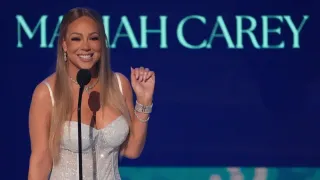October 25, 2016
Peggy Guggenheim: Art Addict
Karin McKie READ TIME: 3 MIN.
The 20th century's "midwife of modern art" is profiled in Lisa Immordino Vreeland's smart, engaging documentary "Peggy Guggenheim: Art Addict."
The clever Pollack-splattered titles presage the in-depth material that follows. Vreeland found some never-heard-before Guggenheim interview tapes, from near the end of her life, which she intersperses with archival footage and stills, along with interviews from actors Robert De Niro (whose parents worked with her) and Mercedes Ruehl, who portrayed her in a play, plus critics, curators, as well as some of the artists she championed.
That list is a Who's Who in art of the last century, including Mark Rothko, Robert Motherwell, and Jackson Pollack, whom she discovered, a man who "knocked you flat with his arbitrariness... who could fling paint with the accuracy of a cowboy with a lasso."
"Art became a mirror for her own strangeness," one said about the lone woman in a male-dominated field.
Although she was born into a wealthy (and likely mentally ill) family, Guggenheim wasn't formally trained in art, but she was "passionate to use art to promote herself." (Marcel Duchamp would later school her in surrealism and abstractism.)
She had a nervous breakdown at age 13, after her father committed suicide. When asked if her mother raised her well, she said, "I don't think there were any good mothers in those days."
Which proved to be true, as her mother lost all of her dad's money.
Guggenheim is described as having a "lack of beauty, not a glamorous social figure," which made her ripe to become a new kind of collector. She says her sister talked her out of college, so, in 1921, she moved to the heart of European avant-garde, Paris, where Dadaism sprung "from the atrocities of World War One," and where she hung out with James Joyce, was painted by Man Ray, and played tennis with Ezra Pound.
There she married writer and painter Laurence Vail, whom she "used to get rid of her virginity." They had son Sindbad and daughter Pegeen before divorcing. She then took up with Brit John Holms, who made her "more serious, less trivial," before his untimely death at age 36 (he got drunk before a wrist surgery and never woke up from the anesthesia).
Guggenheim was apparently hungry for bad boys as lovers, so creatives fitted the bill, including Samuel Beckett. She inherited $450,000 when her mother died, so she opened a gallery in England in 1938, where she gave Vasily Kandinsky his first show.
When the gallery closed, she opened a museum, but, with Nazi attacks on modern art, like the infamous "Degenerate Art" exhibition, she was instrumental in getting important work and creators out of Europe and into New York.
In 1941 she opened NYC's Art of This Century Gallery, and married Max Ernst after Pearl Harbor. Even her presentation techniques were unique, as she hung paintings on swivels so they could be accessible, like libraries, and train noises and lights would randomly occur in the gallery.
"She was a pollinator, a link between realism and abstract expressionism, between Europe and America," one noted.
She also continued to be "charmingly na�ve, without guile, a mixture of old-fashioned and modern," an odd duck with a tongue tic. She was one of the first to have plastic surgery -- a botched nose job.
Yet her eye was keen. She was upset when she saw paintings she'd procured to museums, regretting that she'd ever sold them.
She finally ended up in Venice, from 1947 until her death in 1979 at age 81, a "place of passage, but she stayed." She bought a palazzo at a bargain since it was right after WW II, a one-story right on the water where she surrounded herself with gay men and "a tumble of dogs." People said the food and wine she served at soirees was bad, but she was "a gourmand of life, not of food." She sent selections from her collection to be exhibited at The Mus�e de l'Orangerie, paintings that many thought weren't worth saving before the war, thus validating her eye and her influence.
Today, many consider a visit to her palace, where she is buried with 14 of her dogs, as a pilgrimage, where annually millions see her 326 works from over 100 artists.
In this riveting film, Peggy Guggenheim is described as having a hunger for life alongside unbearable sadness, all while curating seminal works and unprecedented creators.
Vreeland imparts that "great art is eternal, and, through it, viewers may become immortal."
For documentary screening info, visit http://www.peggyguggenheimfilm.com






